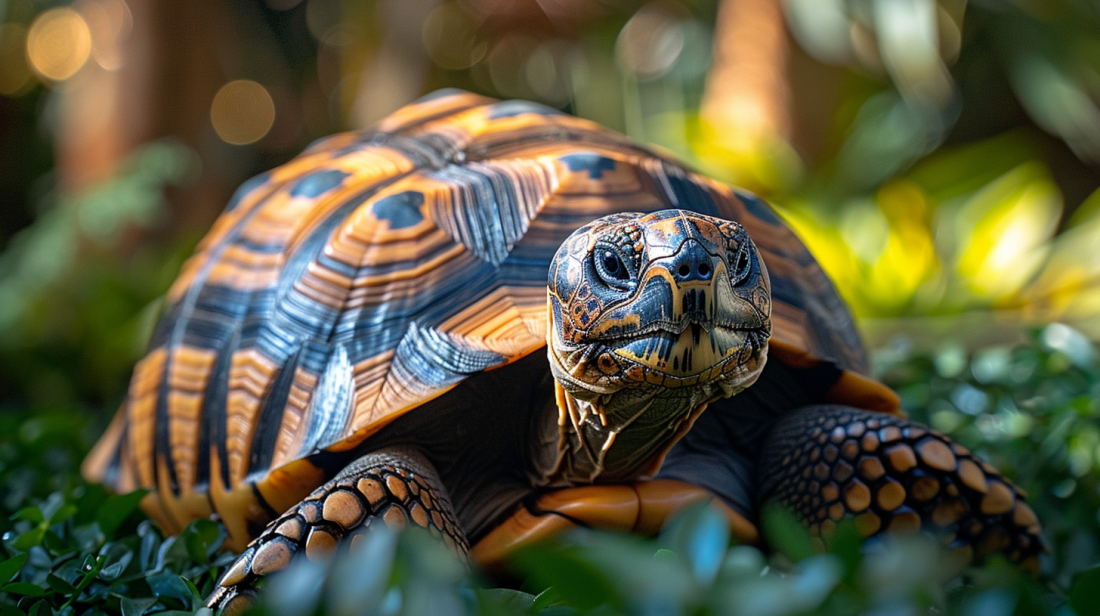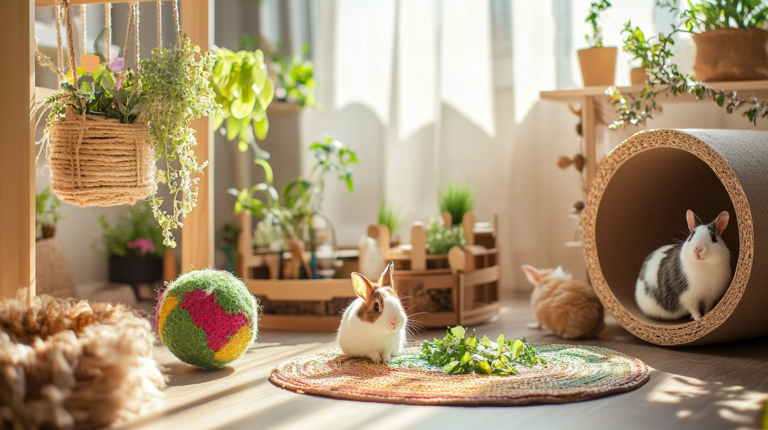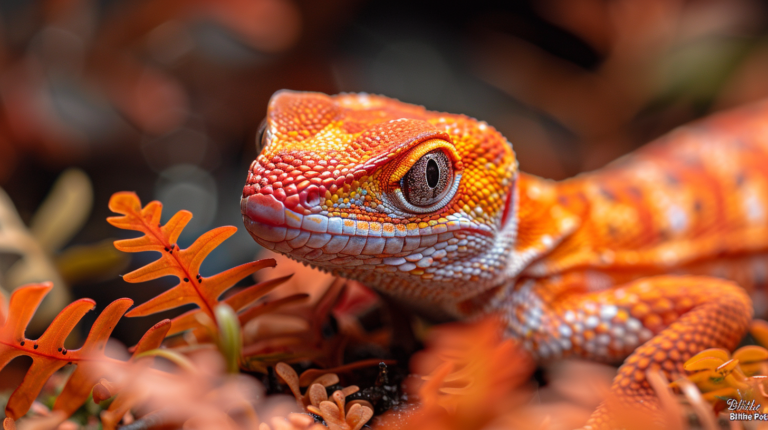Discover 7 essential Ibera Greek Tortoise care tips from experts. Learn proper housing, diet, hibernation, and health care for your Mediterranean tortoise companion.
Table of Contents
The Ibera Greek Tortoise, scientifically known as Testudo graeca ibera, represents one of the most cherished reptilian companions in the pet world today. These magnificent creatures, native to the Mediterranean regions of Turkey, Greece, and surrounding areas, have captured the hearts of reptile enthusiasts worldwide with their distinctive personality and remarkable longevity. As hardy representatives of the Greek tortoise subspecies, Ibera Greek Tortoises can live for decades when provided with proper care, making them lifelong companions that often outlive their human families.
Understanding the specific needs of your Ibera Greek Tortoise is crucial for ensuring their health, happiness, and longevity. Unlike many other pet species, these tortoises require specialized care that mimics their natural Mediterranean habitat, including specific temperature ranges, dietary requirements, and seasonal behavioral patterns. Whether you’re a first-time tortoise owner or an experienced reptile keeper looking to expand your knowledge, mastering these seven essential care tips will transform you into a confident and successful Ibera Greek Tortoise guardian.
Understanding the Ibera Greek Tortoise: Species Overview
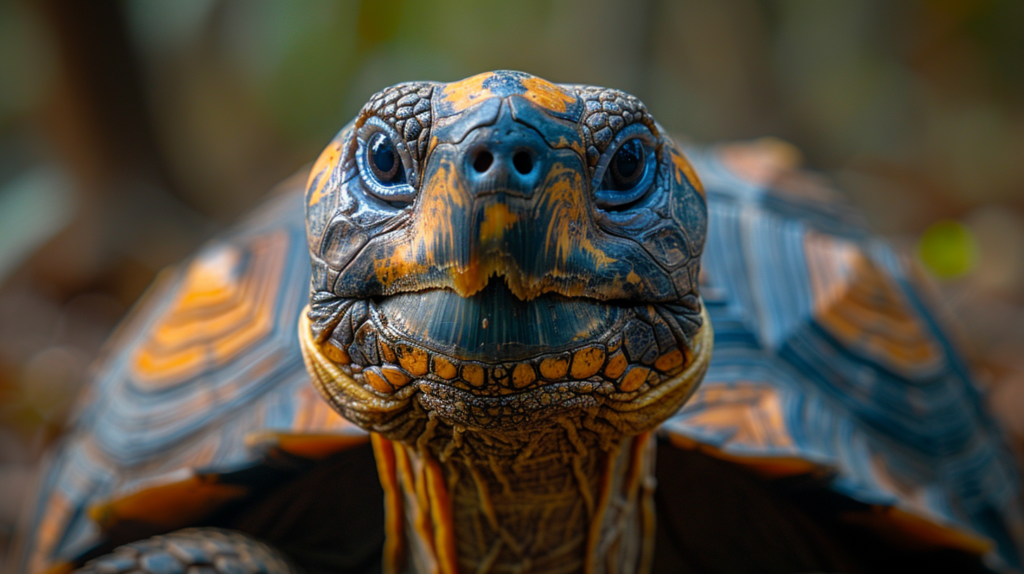
The Ibera Greek Tortoise stands out among Mediterranean tortoises due to its robust build, distinctive shell patterns, and adaptable nature. Adult specimens typically measure between 6-8 inches in length, with females generally growing larger than males. Their carapace displays beautiful variations of brown, yellow, and black coloration, often featuring intricate geometric patterns that make each individual unique.
These tortoises are naturally adapted to Mediterranean climates, experiencing hot, dry summers and mild, wet winters. In their native habitat, they demonstrate remarkable resilience, surviving in areas with limited water sources and variable food availability. This natural hardiness translates well to captivity when their environmental needs are properly met.
Key Physical Characteristics:
- Size: 6-8 inches (15-20 cm) shell length
- Weight: 1-3 pounds (0.5-1.4 kg) when fully grown
- Lifespan: 50-100+ years with proper care
- Sexual dimorphism: Males have longer tails and concave plastrons
Essential Care Tip 1: Creating the Perfect Habitat Setup
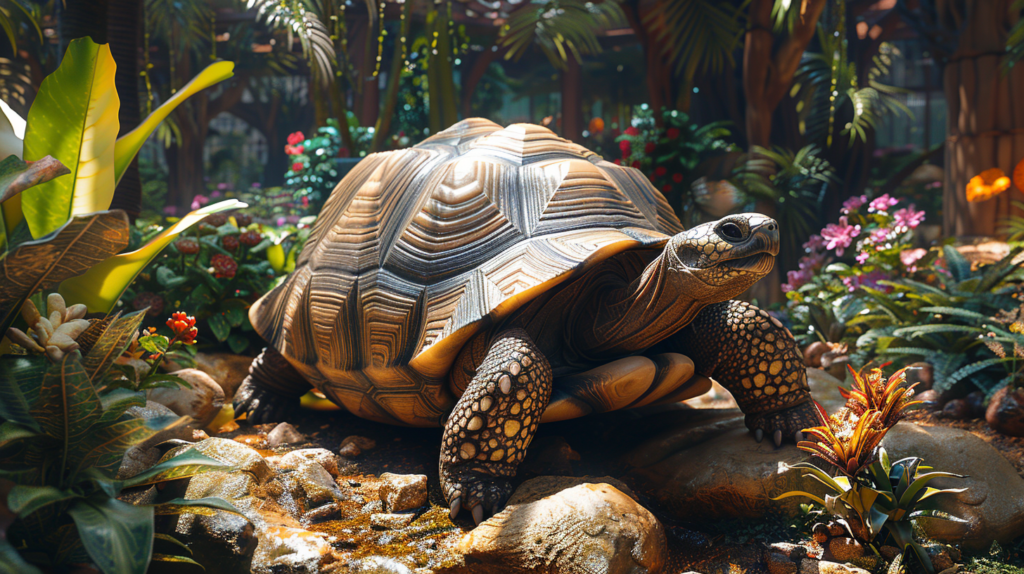
Indoor Housing Requirements
The foundation of successful Ibera Greek Tortoise care begins with providing an appropriate living environment. For indoor housing, a minimum enclosure size of 4 feet by 8 feet is recommended for a single adult tortoise, though larger spaces are always preferable. The enclosure should feature both warm and cool areas, allowing your tortoise to thermoregulate naturally.
Critical Habitat Elements:
- Substrate: Use a mixture of topsoil, sand, and cypress mulch (2-3 inches deep)
- Hide boxes: Provide at least two hiding spots on warm and cool sides
- Water dish: Shallow, easy-to-clean ceramic or plastic bowl
- Climbing structures: Flat rocks or logs for exercise and basking
Outdoor Enclosure Design
When weather permits, outdoor enclosures provide the most natural environment for Ibera Greek Tortoises. A secure outdoor pen should measure at least 8 feet by 12 feet for one adult tortoise, with walls buried 6-8 inches underground to prevent escaping through digging.
Outdoor Enclosure Features:
- Fencing: 18-24 inches high with smooth interior surfaces
- Shelter: Weatherproof house with proper ventilation
- Landscaping: Native plants, rocks, and varied terrain
- Drainage: Proper grading to prevent water accumulation
![Ibera Greek Tortoise outdoor enclosure with secure fencing, shelter, and natural landscaping elements]
Essential Care Tip 2: Mastering Temperature and Lighting Requirements
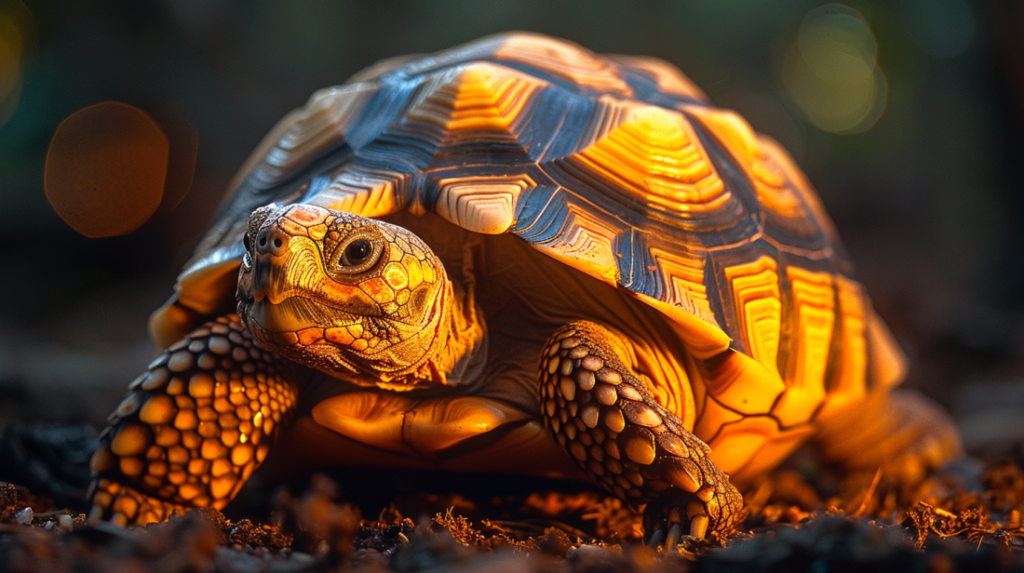
Temperature Management
Ibera Greek Tortoises are ectothermic animals, meaning they rely on external heat sources to regulate their body temperature. Proper temperature gradients are essential for digestion, immune function, and overall health.
Temperature Zones:
- Basking spot: 95-100°F (35-38°C)
- Warm side: 85-90°F (29-32°C)
- Cool side: 75-80°F (24-27°C)
- Nighttime: 65-75°F (18-24°C)
Lighting Systems
Proper lighting serves multiple functions beyond simple illumination. Ibera Greek Tortoises require both UVA and UVB radiation for vitamin D3 synthesis, calcium absorption, and natural behavioral patterns.
Lighting Requirements:
- UVB: 10-12% UVB fluorescent or LED bulbs
- UVA: Full-spectrum lighting for natural behavior
- Photoperiod: 12-14 hours daily during active season
- Replacement schedule: Every 6-8 months for optimal output
Pro Tip: Use a digital thermometer with probes to monitor temperatures in multiple zones simultaneously. Temperature guns provide instant readings but may not reflect the consistent conditions your tortoise experiences.
Essential Care Tip 3: Nutritional Excellence Through Proper Diet
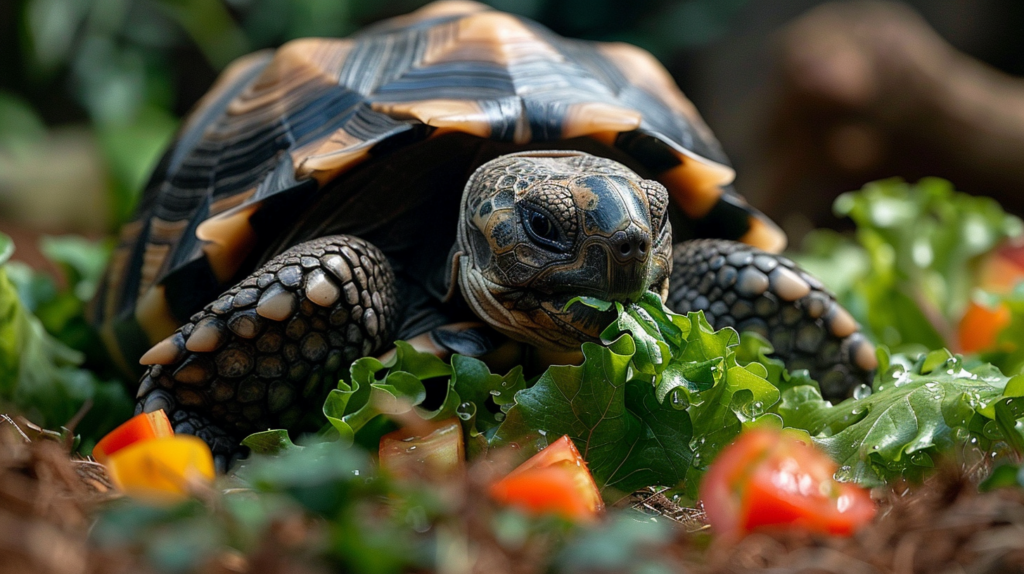
Wild Diet vs. Captive Nutrition
In their natural Mediterranean habitat, Ibera Greek Tortoises consume a diverse array of vegetation, including grasses, weeds, flowers, and occasional fruits. Replicating this varied diet in captivity requires careful planning and attention to nutritional balance.
Primary Food Categories:
Leafy Greens (60-70% of diet):
- Dandelion greens and flowers
- Plantain
- Clover
- Mustard greens
- Collard greens
- Turnip greens
Grasses and Hay (20-25% of diet):
- Timothy hay
- Orchard grass
- Bermuda grass
- Wheat grass
Vegetables and Fruits (10-15% of diet):
- Squash
- Bell peppers
- Carrots (occasionally)
- Cactus pads (prickly pear)
- Berries (strawberries, raspberries)
Feeding Schedule and Portions
Adult Ibera Greek Tortoises should be fed daily during their active season (spring through fall) and every other day during cooler months. Juveniles require daily feeding year-round to support proper growth and development.
Feeding Guidelines:
- Portion size: Amount tortoise can consume in 30-45 minutes
- Frequency: Daily for adults during active season
- Variety: 5-7 different food items per feeding
- Calcium supplementation: 2-3 times weekly for adults, daily for juveniles
Foods to Avoid
Certain foods can be harmful or toxic to Ibera Greek Tortoises. Avoid feeding iceberg lettuce, spinach, rhubarb, avocado, and any processed human foods. Additionally, limit high-sugar fruits and never feed animal proteins.
Essential Care Tip 4: Hibernation and Seasonal Care Management
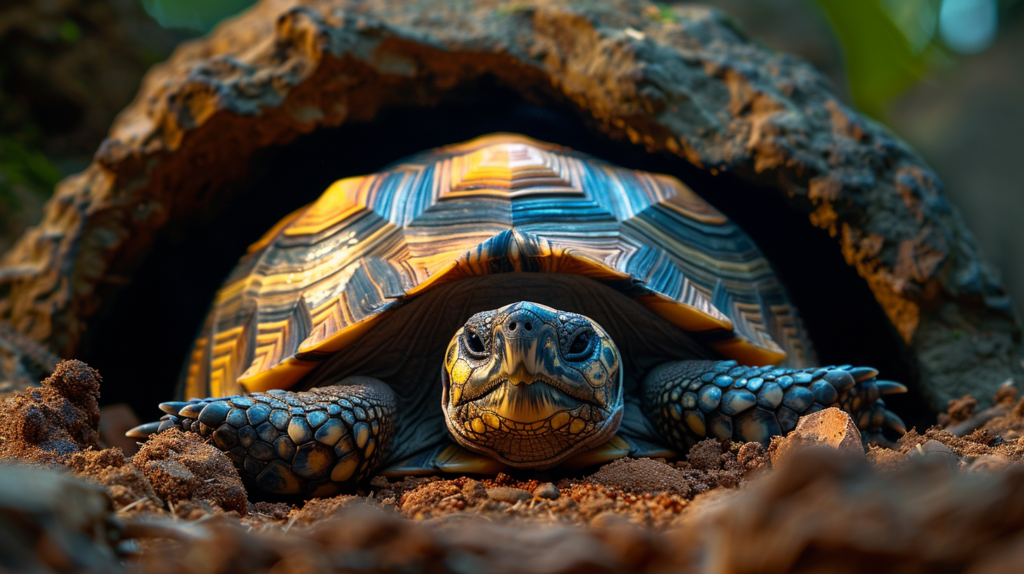
Understanding Natural Hibernation Patterns
Ibera Greek Tortoises naturally hibernate (technically called brumation) during cooler months in their native habitat. This period of reduced activity and metabolism is essential for their long-term health and reproductive success.
Hibernation Timeline:
- Preparation: October-November
- Hibernation period: December-February
- Emergence: March-April
- Full activity: May-September
Pre-Hibernation Preparation
Proper preparation is crucial for safe hibernation. Begin reducing food intake 4-6 weeks before planned hibernation, allowing the digestive system to empty completely. Maintain normal lighting and temperature during this period while monitoring your tortoise’s weight and overall condition.
Pre-Hibernation Checklist:
- Veterinary health check
- Gradual food reduction
- Parasite screening
- Weight documentation
- Preparation of hibernation container
Hibernation Methods
Two primary methods exist for hibernating Ibera Greek Tortoises: refrigerator hibernation and outdoor hibernation. Refrigerator hibernation provides more control over temperature and conditions, while outdoor hibernation offers a more natural experience.
Refrigerator Hibernation Setup:
- Temperature: 35-40°F (2-4°C)
- Container: Ventilated plastic box with substrate
- Monitoring: Weekly weight checks
- Duration: 8-12 weeks maximum
Essential Care Tip 5: Health Monitoring and Veterinary Care
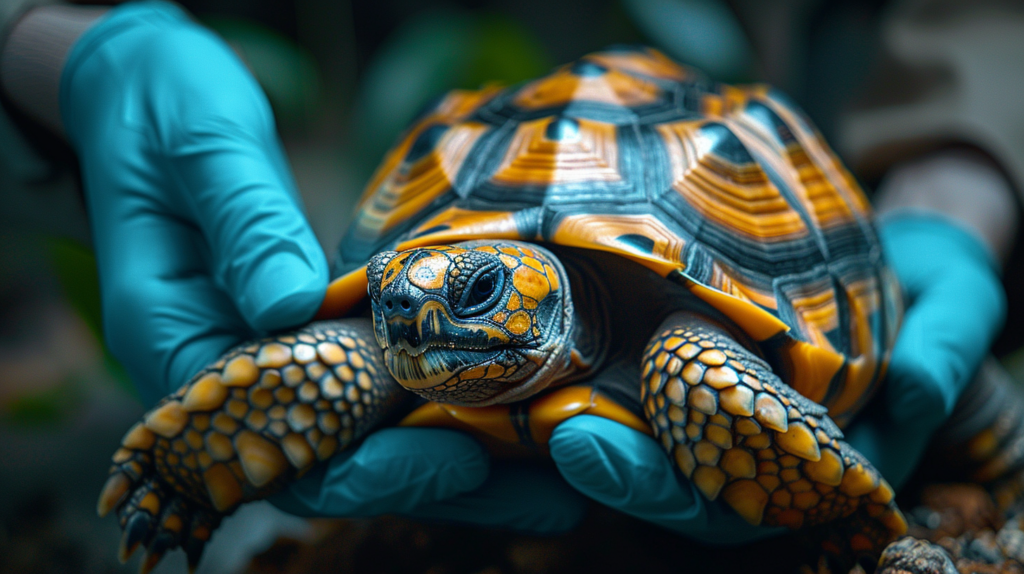
Regular Health Assessments
Proactive health monitoring is essential for detecting potential issues before they become serious problems. Ibera Greek Tortoises are masters at hiding illness, making regular observation and assessment crucial for early intervention.
Weekly Health Checks:
- Eyes: Clear, bright, and alert
- Nose: Clean, no discharge or whistling sounds
- Shell: Firm, properly shaped, no soft spots
- Skin: Smooth, no swelling or discoloration
- Appetite: Consistent eating behavior
- Activity level: Normal movement and basking behavior
Common Health Issues
Understanding common health problems helps owners recognize symptoms early and seek appropriate veterinary care. Respiratory infections, shell rot, and nutritional deficiencies represent the most frequent health challenges in captive Ibera Greek Tortoises.
Respiratory Infections:
- Symptoms: Wheezing, mouth breathing, nasal discharge
- Causes: Inadequate temperatures, poor ventilation, stress
- Treatment: Veterinary antibiotics, improved husbandry
Shell Problems:
- Symptoms: Soft spots, discoloration, pyramid-shaped growth
- Causes: Nutritional imbalances, inadequate lighting, injury
- Treatment: Dietary correction, proper lighting, veterinary care
Nutritional Deficiencies:
- Symptoms: Soft shell, lethargy, poor appetite
- Causes: Inadequate diet, improper calcium/phosphorus ratio
- Treatment: Dietary improvement, vitamin supplementation
Finding an Exotic Veterinarian
Not all veterinarians have experience with reptiles, making it important to locate an exotic animal specialist before you need emergency care. Research local exotic veterinarians and establish a relationship through routine wellness visits.
Veterinary Care Schedule:
- Initial exam: Within 30 days of acquisition
- Annual wellness: Once yearly for healthy adults
- Bi-annual exams: For seniors (25+ years) or those with health issues
- Emergency care: Any sudden changes in behavior or appearance
Essential Care Tip 6: Breeding and Reproduction Considerations

Sexual Maturity and Breeding Behavior
Ibera Greek Tortoises reach sexual maturity based on size rather than age, typically when they achieve 4-5 inches in shell length. Males develop distinctive characteristics including longer tails, concave plastrons, and more aggressive territorial behavior during breeding season.
Breeding Season Behaviors:
- Male courtship: Head bobbing, ramming, mounting attempts
- Female behavior: Increased appetite, nesting behavior
- Seasonal timing: Spring through early summer
- Environmental triggers: Increased daylight, temperature, and humidity
Egg Laying and Incubation
Female Ibera Greek Tortoises may lay eggs even without mating, though these will be infertile. Providing appropriate nesting areas and understanding the egg-laying process helps ensure the health of breeding females.
Nesting Requirements:
- Substrate depth: 8-10 inches of soft, moist soil
- Nesting box: 12x12x10 inches minimum
- Privacy: Quiet, undisturbed location
- Temperature: 80-85°F (27-29°C)
Incubation Parameters:
- Temperature: 84-88°F (29-31°C)
- Humidity: 80-85%
- Duration: 60-90 days
- Substrate: Vermiculite and water mixture
Responsible Breeding Practices
Breeding Ibera Greek Tortoises requires significant commitment, knowledge, and resources. Consider the long-term implications of breeding, including housing requirements for offspring and finding suitable homes for young tortoises.
Essential Care Tip 7: Enrichment and Exercise for Mental Health
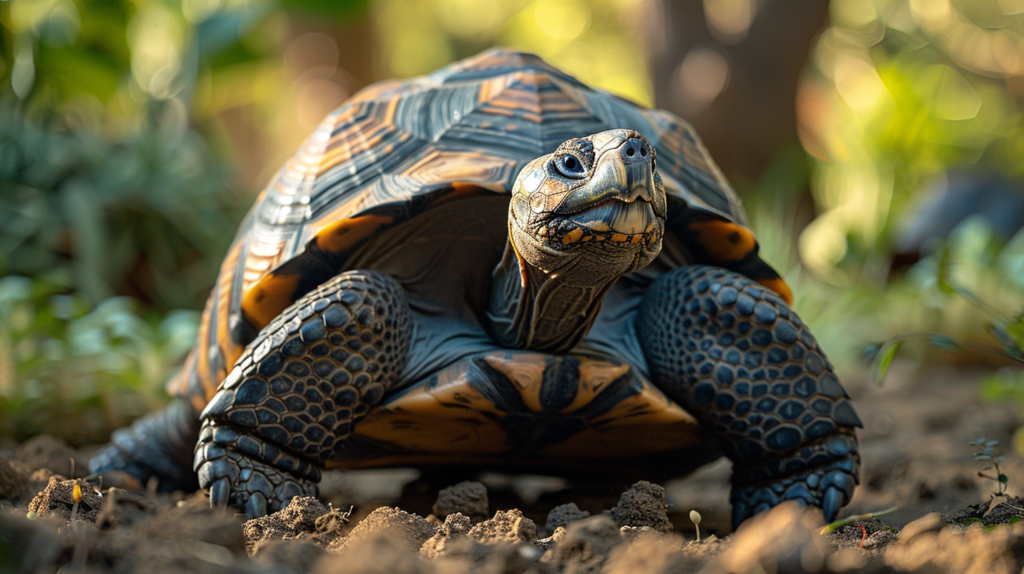
Natural Behavior Encouragement
Ibera Greek Tortoises are naturally curious and active animals that benefit from environmental enrichment. Providing opportunities for natural behaviors like foraging, climbing, and exploring promotes both physical and mental well-being.
Enrichment Ideas:
- Foraging opportunities: Hide food throughout enclosure
- Climbing structures: Rocks, logs, and ramps
- Digging areas: Deep substrate sections
- Seasonal changes: Rotate decorations and layout
- Outdoor time: Supervised garden exploration
Exercise and Activity
Regular exercise is essential for maintaining healthy weight, proper shell development, and muscle tone. Ibera Greek Tortoises are surprisingly active when provided with adequate space and motivation.
Exercise Strategies:
- Large enclosures: Maximize available space
- Obstacle courses: Create challenging terrain
- Food motivation: Place meals in different locations
- Supervised walks: Safe outdoor exploration
- Swimming: Shallow water exercise (supervised)
Social Interaction
While Ibera Greek Tortoises are generally solitary animals, they can benefit from appropriate social interaction with their human caregivers. Regular, gentle handling helps maintain their calm demeanor and allows for health monitoring.
Handling Guidelines:
- Support: Use both hands, support shell and legs
- Frequency: Brief sessions 2-3 times weekly
- Timing: When tortoise is warm and alert
- Respect: Allow tortoise to retreat if stressed
- Observation: Watch for signs of discomfort
Advanced Care Considerations
Quarantine Protocols
New Ibera Greek Tortoises should undergo a minimum 90-day quarantine period before introduction to existing collections. This quarantine allows for health monitoring, parasite screening, and behavioral assessment.
Quarantine Setup:
- Separate room: Complete isolation from other reptiles
- Basic enclosure: Simple setup for easy cleaning
- Dedicated equipment: Separate tools and supplies
- Health monitoring: Daily observation and record-keeping
Record Keeping
Maintaining detailed records of your Ibera Greek Tortoise’s care, health, and behavior provides valuable information for veterinary care and helps track long-term trends.
Essential Records:
- Daily observations: Appetite, behavior, elimination
- Weight tracking: Monthly weights during active season
- Health events: Veterinary visits, illnesses, treatments
- Breeding records: Mating, egg-laying, incubation data
- Environmental data: Temperature, humidity, lighting schedules
Seasonal Care Adjustments
Successful Ibera Greek Tortoise care requires adjusting husbandry practices based on seasonal changes and natural behavioral patterns. These adjustments help maintain your tortoise’s biological rhythms and overall health.
Spring Care:
- Gradual increase in feeding frequency
- Extended daylight hours
- Increased monitoring for breeding behavior
- Preparation for outdoor housing
Summer Care:
- Maximum feeding and activity
- Outdoor enclosure utilization
- Increased water availability
- Heat stress monitoring
Fall Care:
- Gradual reduction in feeding
- Preparation for hibernation
- Health assessments
- Weight monitoring
Winter Care:
- Hibernation management
- Reduced activity expectations
- Minimal disturbance
- Emergency preparedness
Creating a Naturalistic Environment
Substrate Selection
The choice of substrate significantly impacts your tortoise’s health, behavior, and overall well-being. Natural substrates that allow for digging and provide appropriate texture are preferred over artificial alternatives.
Recommended Substrates:
- Topsoil mix: 50% topsoil, 25% sand, 25% mulch
- Cypress mulch: Natural, mold-resistant option
- Coconut coir: Retains moisture, allows digging
- Peat moss: Mixed with other substrates for moisture retention
Plant Selection for Tortoise Enclosures
Live plants provide natural foraging opportunities, humidity regulation, and aesthetic appeal. Choose plants that are safe for tortoise consumption and appropriate for your climate conditions.
Safe Plants for Tortoise Enclosures:
- Edible flowers: Hibiscus, nasturtiums, pansies
- Grasses: Bermuda, fescue, rye grass
- Herbs: Oregano, thyme, rosemary
- Vegetables: Squash, beans, peas
- Weeds: Dandelions, clover, plantain
Water Features
While Ibera Greek Tortoises don’t require deep water, providing appropriate water features enhances their environment and supports natural behaviors.
Water Feature Options:
- Shallow dishes: Easy access for drinking
- Soaking pools: Occasional deep soaking opportunities
- Misting systems: Humidity and enrichment
- Drip systems: Continuous fresh water supply
Troubleshooting Common Care Challenges
Appetite Issues
Loss of appetite in Ibera Greek Tortoises can indicate various problems, from environmental issues to serious health conditions. Systematic troubleshooting helps identify and resolve appetite problems.
Troubleshooting Steps:
- Check temperatures: Ensure proper basking and ambient temperatures
- Evaluate lighting: Verify UVB output and photoperiod
- Review diet: Assess food quality and variety
- Monitor behavior: Look for other signs of illness
- Consult veterinarian: If appetite loss persists beyond 3-5 days
Shell Problems
Shell abnormalities can develop due to various factors including nutrition, genetics, and environmental conditions. Early recognition and intervention prevent serious complications.
Common Shell Issues:
- Pyramiding: Excessive growth creating peaked scutes
- Soft shell: Lack of calcium or excessive phosphorus
- Shell rot: Bacterial or fungal infections
- Growth rings: Normal growth patterns, not concerning
Behavioral Changes
Sudden behavioral changes in Ibera Greek Tortoises often indicate underlying problems requiring attention. Understanding normal versus abnormal behavior helps identify issues early.
Normal Behaviors:
- Seasonal activity changes
- Mild territorial behavior
- Exploration and foraging
- Regular basking and hiding
Concerning Behaviors:
- Excessive lethargy
- Aggression toward handlers
- Repetitive behaviors
- Apparent disorientation
Long-Term Care Planning
Lifespan Considerations
Ibera Greek Tortoises can live for many decades, often outliving their original owners. Planning for your tortoise’s long-term care ensures they receive proper attention throughout their extended lifespan.
Long-Term Planning Elements:
- Estate planning: Include tortoise in will or trust
- Backup caregivers: Identify potential future homes
- Financial planning: Budget for decades of care costs
- Record maintenance: Keep detailed care histories
Generational Care
Many Ibera Greek Tortoises are passed down through families, creating multi-generational care relationships. Preparing the next generation of caregivers ensures continuity of care.
Preparation Strategies:
- Education: Teach proper care techniques
- Gradual responsibility: Increase care involvement over time
- Documentation: Provide detailed care instructions
- Veterinary relationships: Introduce to exotic veterinarians
Expert Insights and Research
Recent research in reptile husbandry has provided new insights into optimal care practices for Mediterranean tortoises. Studies on thermoregulation, nutrition, and reproduction continue to refine our understanding of these remarkable animals.
According to Dr. Susan Donoghue, a veterinary nutritionist specializing in reptiles, “The key to successful tortoise care lies in understanding their natural history and adapting captive conditions to support their biological needs rather than forcing them to adapt to suboptimal environments.”
Research conducted by the Turtle Survival Alliance indicates that proper hibernation protocols can significantly extend lifespan and improve reproductive success in captive Mediterranean tortoises. Their studies show that tortoises following natural hibernation patterns demonstrate 23% longer lifespans compared to those kept at constant temperatures year-round.
Frequently Asked Questions
How long do Ibera Greek Tortoises live?
Ibera Greek Tortoises are exceptionally long-lived animals, with lifespans typically ranging from 50-100 years or more when provided with proper care. Some specimens have been documented living well over 100 years, making them truly lifelong companions. Their longevity depends on factors including diet, environment, veterinary care, and genetic predisposition.
What size enclosure does an Ibera Greek Tortoise need?
Adult Ibera Greek Tortoises require a minimum indoor enclosure of 4×8 feet, though larger spaces are always preferable. Outdoor enclosures should measure at least 8×12 feet for a single adult. The enclosure should provide temperature gradients, hiding spots, and areas for natural behaviors like digging and foraging. Juveniles can start in smaller enclosures but will need upgrades as they grow.
Do Ibera Greek Tortoises need to hibernate?
Yes, hibernation (brumation) is a natural and beneficial process for Ibera Greek Tortoises. In their native Mediterranean habitat, they hibernate during cooler months, typically from December through February. Captive tortoises should also hibernate, as this process supports their immune system, reproductive health, and overall well-being. However, hibernation requires careful preparation and monitoring.
What do Ibera Greek Tortoises eat?
Ibera Greek Tortoises are herbivorous, requiring a varied diet consisting primarily of leafy greens, grasses, and hay. Their diet should include dandelion greens, plantain, clover, mustard greens, and timothy hay. Occasional treats like berries and squash can be offered, but fruits should be limited. Avoid feeding iceberg lettuce, spinach, and any animal proteins.
How can I tell if my Ibera Greek Tortoise is male or female?
Sexual determination in Ibera Greek Tortoises is based on several physical characteristics. Males typically have longer, thicker tails, concave plastrons (bottom shells), and are generally smaller than females. Females have shorter tails, flat plastrons, and larger overall size. These differences become apparent when tortoises reach sexual maturity at 4-5 inches in shell length.
What temperature should I keep my Ibera Greek Tortoise?
Ibera Greek Tortoises require a temperature gradient with a basking spot of 95-100°F, warm side temperatures of 85-90°F, and cool side temperatures of 75-80°F. Nighttime temperatures can drop to 65-75°F. Proper temperature gradients allow tortoises to thermoregulate naturally by moving between different temperature zones as needed.
For more expert pet care tips and product recommendations, visit BlithePet.com — your trusted source for pet wellness.
Conclusion
Caring for an Ibera Greek Tortoise represents a unique and rewarding journey that spans decades. These remarkable reptiles bring ancient wisdom and gentle companionship into our modern lives, but they require dedicated, knowledgeable care to thrive. By implementing these seven essential care tips—proper habitat setup, temperature and lighting management, nutritional excellence, hibernation protocols, health monitoring, breeding considerations, and enrichment activities—you’ll provide your tortoise with the foundation for a long, healthy, and fulfilling life.
Remember that tortoise care is an ongoing learning process. Each individual tortoise has unique preferences and requirements, and successful care involves observing, adapting, and continuously improving your husbandry practices. The investment in proper care pays dividends in the form of a fascinating, long-lived companion that will bring joy to your family for generations.
The commitment to caring for an Ibera Greek Tortoise extends far beyond the initial setup. These animals require consistent, thoughtful care throughout their extended lifespans, making them ideal companions for dedicated reptile enthusiasts who appreciate the unique rewards of long-term animal relationships.
Have a similar experience with your pet? Share it in the comments below!

